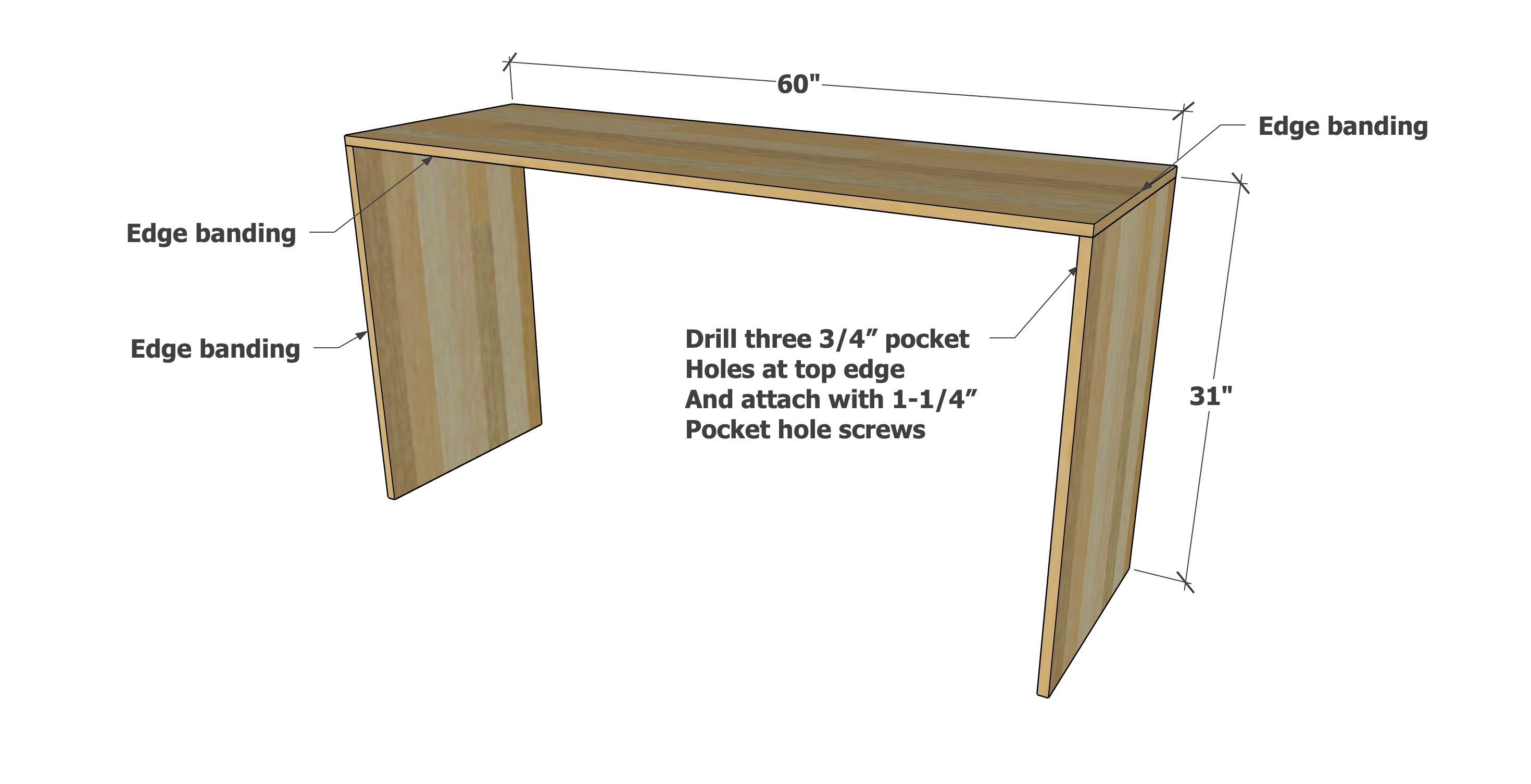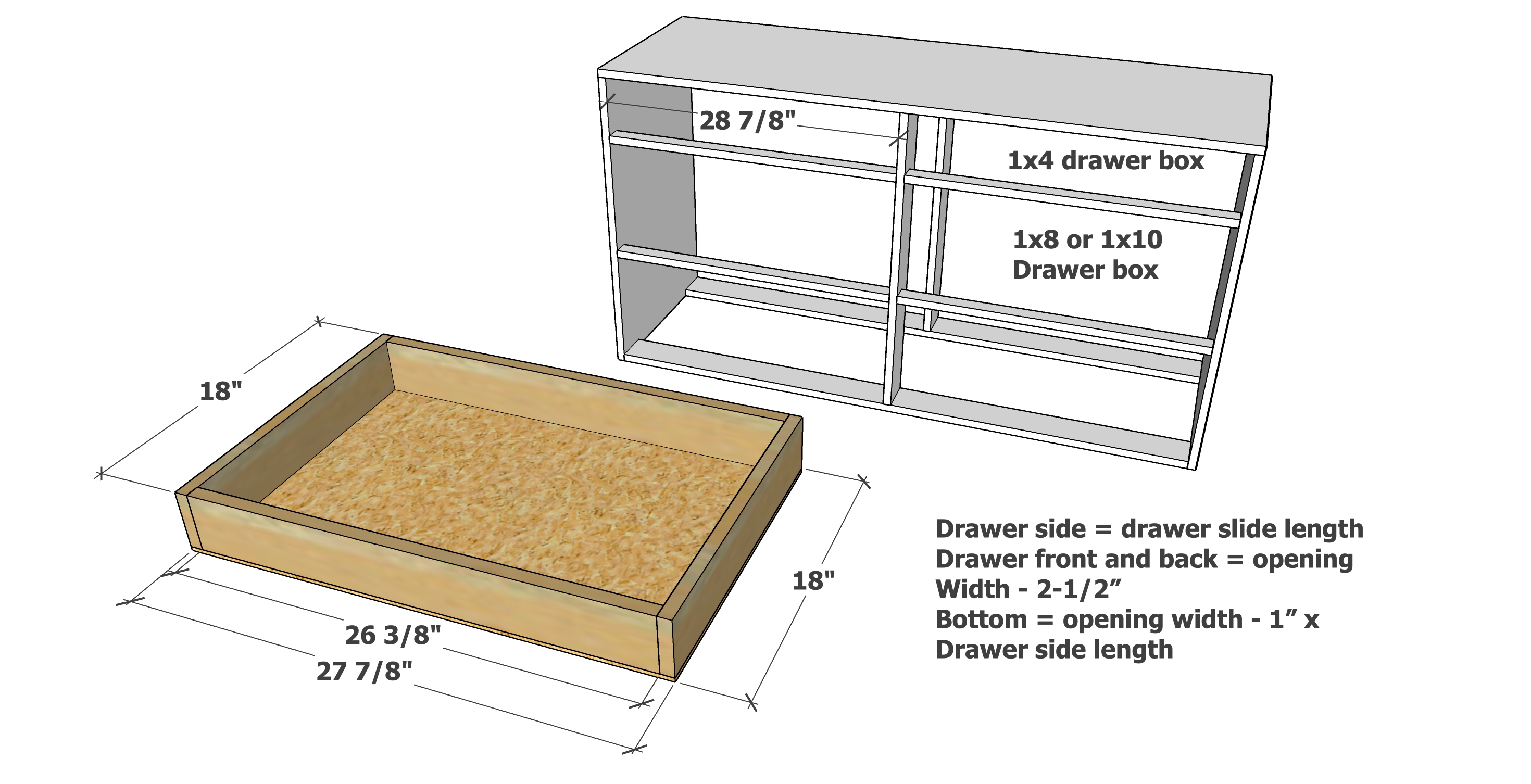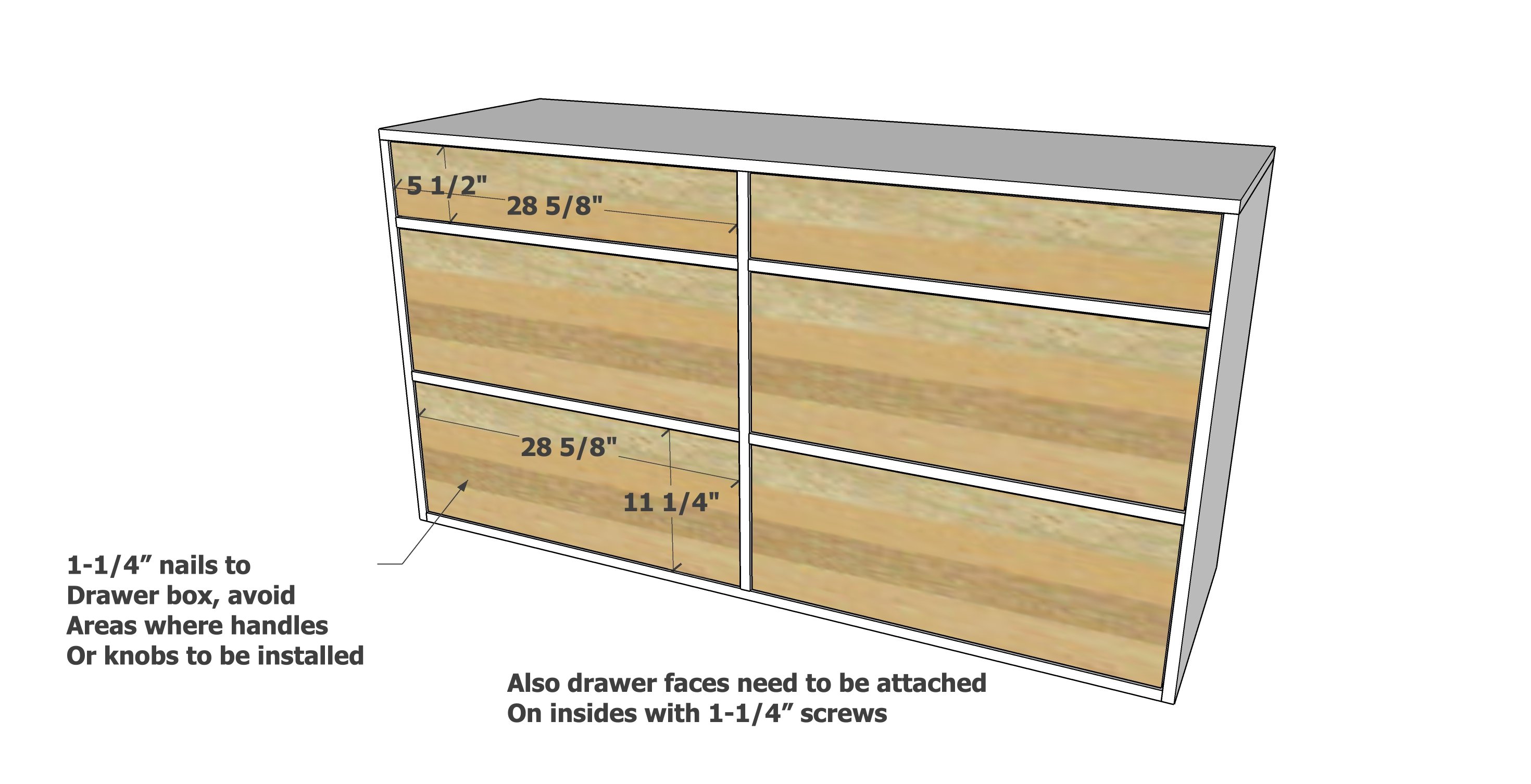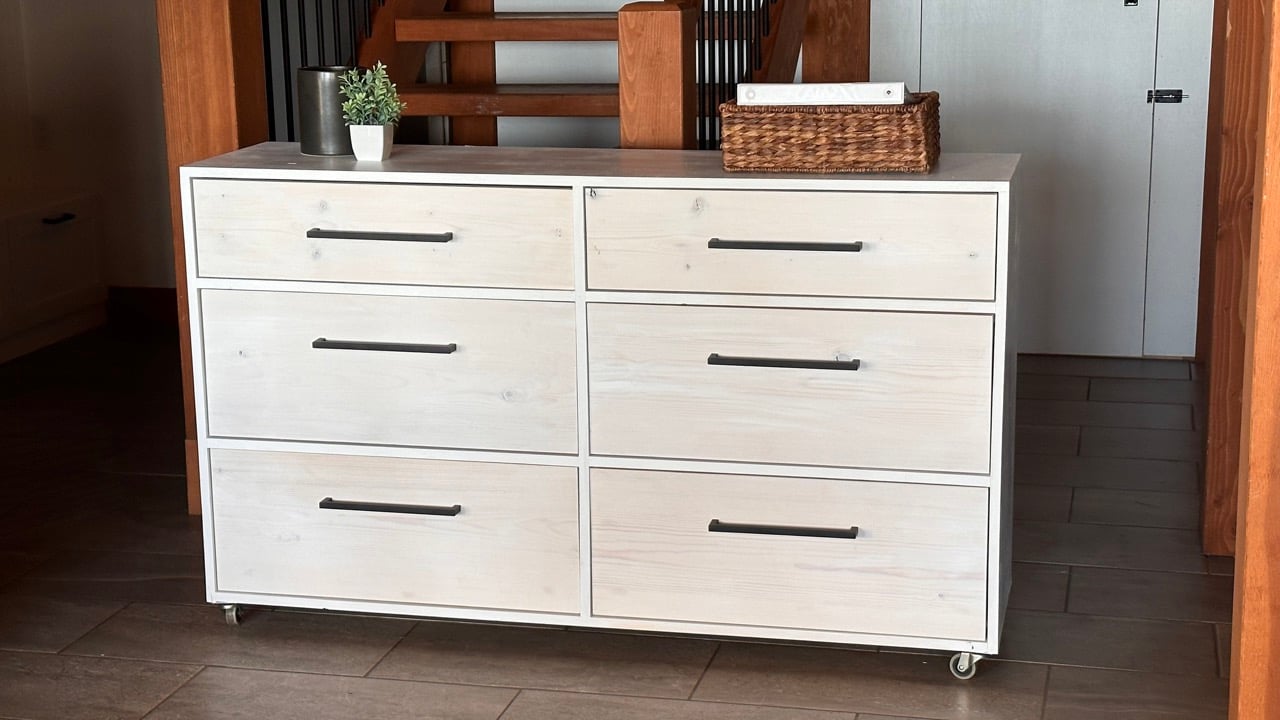
Build your own dress with maximum storage! You can customize the size for a perfect fit.
This dresser is a no frills, frameless design that spares the ornate detail in favor of maximum storage. This dresser is perfect in closets, as a console table, or anywhere you need lots of storage in a sleek profile.
This is a free step by step project plans with detailed diagrams, build video, shopping and cut list and more from Ana-White.com
Pin For Later!
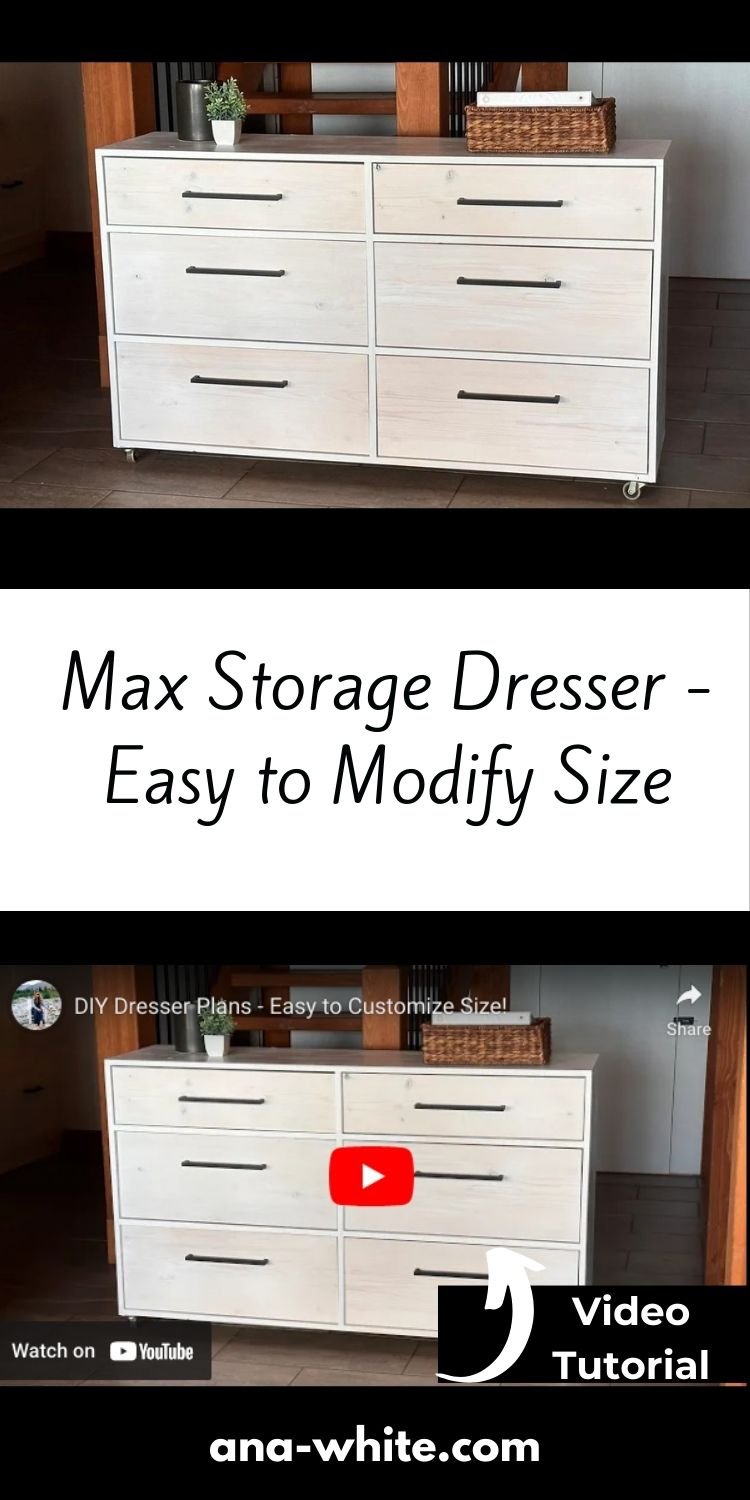
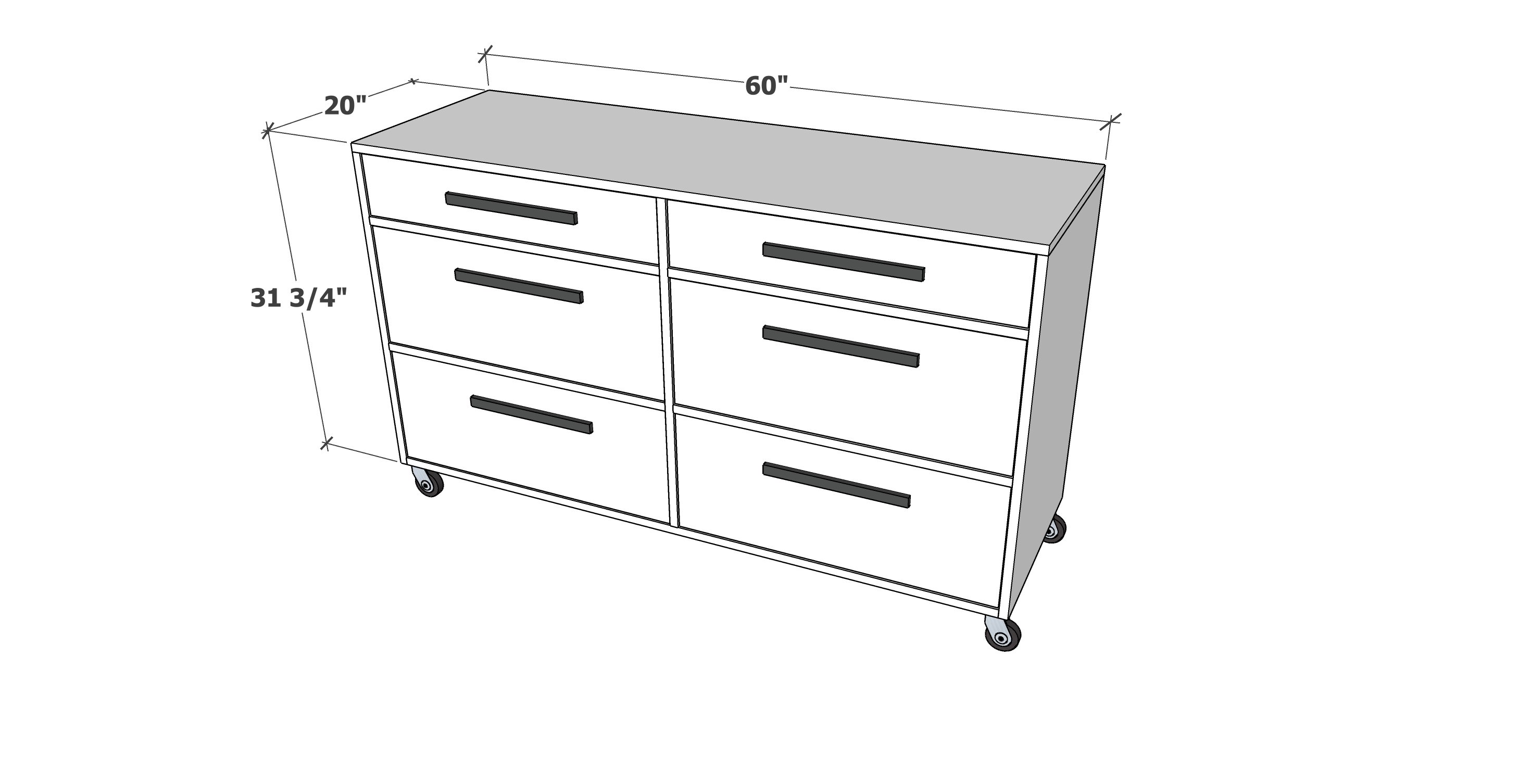
Preparation
- (1) 4x8 sheet of 3/4" hardwood plywood
- (2) 4x8 sheets of 1/4" hardwood plywood or underlayment
- 4- 1x4 @ 8 feet long
- 2 - 1x2 @ 8 feet long
- 4 - 1x8 @ 8 feet long
- 1 - 1x6 @ 5 feet long
- 1 - 1x12 @ 10 feet long
- 1-1/4" pocket hole screws
- 1-1/4" and 3/4" brad nails
- wood glue
- (4) 3" caster wheels
- (6) knobs or handles
- (6) 18" euro style drawer slides
Carcass
- 1 - 3/4" plywood @ 20" x 60" - top, edge band front and end edges
- 2 - 3/4" plywood @ 20" x 31" - sides, edge band front edge only
- 2 - 1x4 @ 58-1/2" - bottoms
- 2 - 1x4 @ 30-1/4" - center
- 4 - 1x2 @ 28-7/8" - between drawer trim
- 1 - 1/4" plywood @ 60" x 31-3/4"
Drawers
- 4 - 1x4 @ 20"
- 4 - 1x4 @ 26-3/8" - front and back, should be 2-1/2" less than opening width
- 8 - 1x8 @ 20"
- 8 - 1x8 @ 26-3/8" - front and back, should be 2-1/2" less than opening width
- 6 - 1/4" plywood @ 20" x 27-7/8"- drawer bottoms
- 2 - 1x6 @ 28-5/8" - top drawer faces
- 4 - 1x12 @ 28-5/8" - lower drawer faces
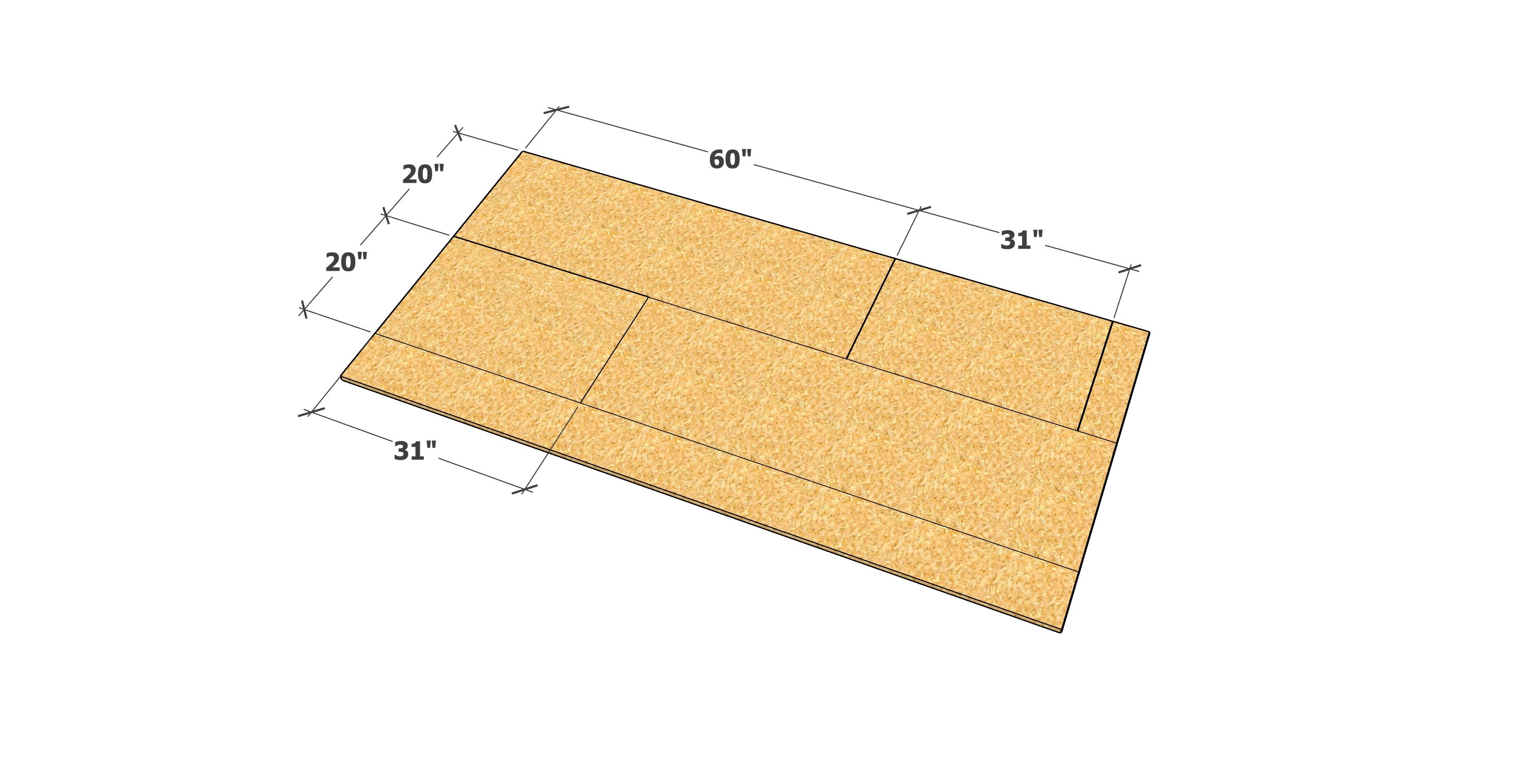
Rip the 3/4" plywood first into strips 20" wide. Then cross cut one piece at 60" and two pieces at 31"
Apply edge banding to all front edges and the two end edges of the top.
Instructions
Step 1
Step 2
Step 3
Step 4
Step 5
Step 6
TIP: Paint or stain drawer faces first. It may easier to attach hardware before the drawer face is attached to the drawer box.
Attach drawer faces to the drawer boxes with 1-1/4" brad nails, so there is an even 1/8" gap around all four sides.
Further secure from inside with 1-1/4" screws (I use pocket hole screws)
Remove all sanding residue with a vacuum and a damp, lint free cloth.
For the drawer faces, I used a watered down white paint and wiped it on.















